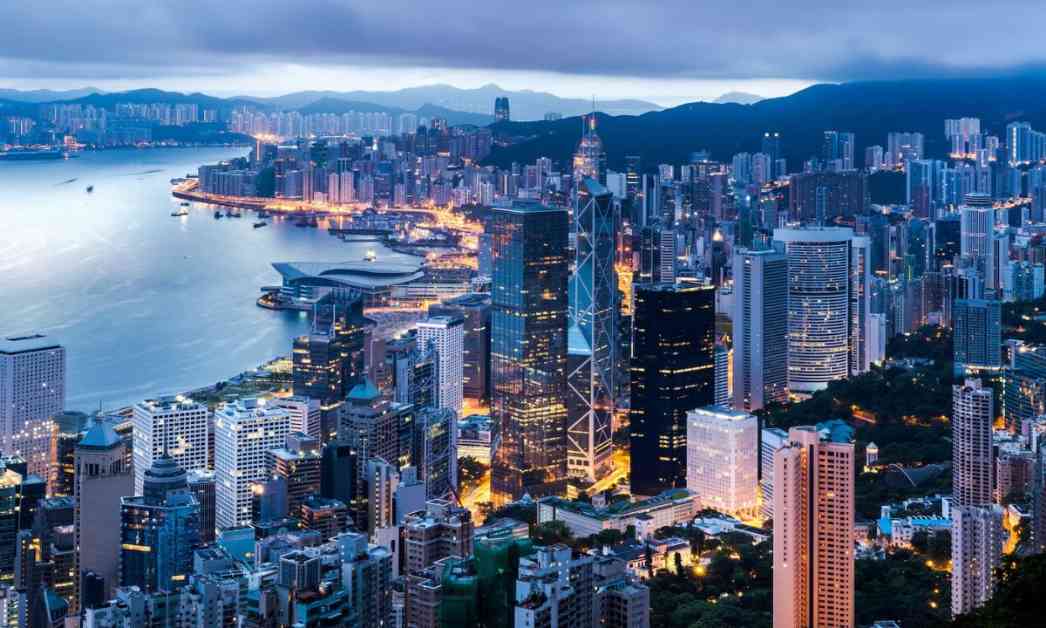Some cities combine a high cost of living with economic opportunities and exceptional quality of life, attracting a cosmopolitan population willing to pay the price. Discover which are the most expensive cities in the world.
The most expensive cities in the world, whether in France or abroad, embody attractions for millions of people seeking to settle in dynamic economic centers, culturally rich, and offering an excellent quality of life. These metropolises, such as Paris, New York, and Hong Kong, are characterized by high real estate demand, high population density, and limited available land, which drives prices to record levels. For example, in Hong Kong, the average price per square meter sometimes exceeds 30,000 euros, while in Paris, real estate prices reach nearly 10,000 euros per square meter in some sought-after neighborhoods.
At the same time, these cities are not only economic centers but also places where quality of life is perceived as exceptional. Swiss cities, such as Zurich and Geneva, combine great economic and political stability with exemplary social and healthcare security, making them popular destinations for expatriates and wealthy investors. In Australia, Sydney stands out for its beautiful living environment, combining magnificent beaches and modern infrastructure. This pleasant living environment often translates into considerably higher living costs than the global average.
In 2024, the French real estate market continues to focus on highly sought-after areas, both for the living environment they offer and for their economic attractiveness. Southern France cities and major metropolises remain at the top of the rankings in terms of price per square meter. Here is a detailed overview of the 10 most expensive cities in France this year:
• Saint-Jean-Cap-Ferrat
• Val-d’Isère
• Saint-Tropez
• Paris
• Boulogne-Billancourt
• Montreuil
• Lyon
• Annecy
• Aix-en-Provence
• Bordeaux
Saint-Jean-Cap-Ferrat is the jewel of the French Riviera. It is a popular destination for both the French and an international elite. The price per square meter there is among the highest in the country, averaging €14,570 per square meter. This small town is renowned for its idyllic landscapes, luxurious villas surrounded by sumptuous gardens, and exclusive beaches. The attraction of Saint-Jean-Cap-Ferrat also lies in its calm and discretion, offering a haven of peace away from the hustle and bustle of big cities while remaining close to Monaco and Nice, two cities also popular for their charm and scenery.
Val-d’Isère, nestled in the Alps, is one of the most prestigious ski resorts in the world. Real estate prices there are extremely high, with an average of €15,354 per square meter. Val d’Isère’s reputation goes far beyond French borders, attracting a wealthy clientele looking for luxurious chalets with breathtaking views of the slopes. In winter, the resort becomes a playground for ski enthusiasts, while in summer, it transforms into an ideal destination for hiking and mountain sports.
Saint-Tropez is world-renowned for its festive atmosphere and fine sandy beaches. Real estate prices in this city also reach new heights. The average price for an apartment is €11,053 per square meter, and, as you can imagine, it attracts a clientele of celebrities, artists, and industrialists from around the world, especially during the summer season when it becomes the center of the global jet-set. The most sought-after properties are those offering sea views, as well as those located in historic neighborhoods.
Paris remains a reference in luxury real estate. With an average price of €9,950 per square meter, the capital continues to attract investors thanks to its charm, iconic monuments, world-renowned museums, and cultural dynamism. Neighborhoods like Le Marais, Saint-Germain-des-Prés, and the 7th arrondissement around the Eiffel Tower are particularly popular. Paris also remains a choice destination for real estate investments, due to its stable rental market and very high demand.
Boulogne-Billancourt is a city in the Parisian suburbs with an average price of €9,319 per square meter. Located west of Paris, it combines a pleasant living environment with immediate proximity to the capital. Boulogne-Billancourt is particularly popular with families and professionals looking for a quiet environment, quality schools, and green spaces while staying connected to the opportunities offered by Paris.
Montreuil is a dynamic city located east of Paris that is experiencing a rapid increase in real estate prices, averaging €6,853 per square meter. What was once a working-class suburb is now a thriving cultural center, attracting artists, young families, and professionals. The proximity to the center of Paris, combined with a rapidly evolving urban environment, makes Montreuil a very attractive alternative for those who want to move away from the hustle and bustle of the capital while remaining close to it.
Lyon, known as the capital of French gastronomy, is also a city where real estate prices are high, with an average of €5,132 per square meter. The city benefits from a strategic geographical location between Paris and the French Riviera and a very attractive living environment. Its historic neighborhoods, such as Presqu’île and Croix-Rousse, are particularly sought after for their unique architecture and friendly atmosphere. Lyon is also a major economic center, attracting many companies and startups, which obviously stimulates real estate demand.
Annecy, often called the “Venice of the Alps,” charms with its exceptional natural setting around its famous lake. The average price there is €5,105 per square meter, reflecting strong demand, especially for properties offering lake views or easy access to the mountains. Annecy is also appreciated for its quality of life, architectural heritage, and economic dynamism, attracting both permanent residents and those looking for a second home.
Aix-en-Provence, with its mild climate and rich historical heritage, has an average price of €4,778 per square meter. The city is known for its Mediterranean atmosphere, cultural festivals, and typical markets. Aix-en-Provence is highly sought after by buyers looking for a peaceful living environment while remaining close to major cities like Marseille. Apartments in the historic district, as well as properties located in the nearby countryside, are particularly sought after.
Bordeaux, the world capital of wine, is experiencing strong real estate demand, with an average price of €4,676 per square meter. The city has undergone a major transformation in recent years, with many urban renewal projects revitalizing its historic neighborhoods. Bordeaux attracts both young professionals and retirees thanks to its pleasant climate, cultural dynamism, and improved accessibility via the high-speed train to Paris.
The ranking of the most expensive cities in France in 2024 reveals several key trends in the real estate market. Coastal areas and luxury ski resorts continue to dominate the rankings, attracting an international clientele willing to invest substantial amounts to acquire properties in locations offering an exceptional living environment.
Paris and its immediate surroundings, such as Boulogne-Billancourt and Montreuil, remain very dynamic markets. The demand for properties near Paris remains strong, fueled by the presence of major companies, cultural institutions, and renowned schools. The Paris region continues to play a central role in France’s real estate attractiveness.
Large regional metropolises, such as Lyon and Bordeaux, are also positioned as attractive markets. These cities combine a pleasant living environment with economic dynamism, making them popular with both investors and residents. Their attractiveness is based on a balance between quality of life, accessibility, and economic opportunities, explaining the rise in prices.
In 2024, the most expensive cities in the world are dominated by international metropolises, major centers of commerce, finance, and cultural life. The high prices in these cities often reflect a combination of factors such as the setting, quality of life, renowned schools, population density, scarcity of buildable land, high cost of living, or a strong demand for luxury real estate. The list of the most expensive cities is regularly updated by various reports, such as those from the Economist Intelligence Unit (EIU) and other sources specializing in global real estate.
Here is a ranking of the 10 most expensive cities in the world in 2024 according to Mercer:
• Hong Kong, China
• Singapore
• Zurich, Switzerland
• Geneva, Switzerland
• Basel, Switzerland
• Bern, Switzerland
• New York, United States
• London, United Kingdom
• Nassau, Bahamas
• Los Angeles, United States
The most expensive cities in the world, whether in France or elsewhere, are so due to a combination of economic, geographical, and social factors. One of the main elements that explain these high prices is the strong demand for limited space. In cities like Paris, New York, or Hong Kong, population density is extremely high, and available land for new constructions is scarce. This scarcity leads to an increase in real estate prices, as more and more people seek to settle in these areas, often with restricted access to new housing.
Furthermore, these cities are often major economic centers, where multinational headquarters, financial institutions, and highly skilled workforce are concentrated, further stimulating demand for quality properties. First-rate infrastructure, such as public transport, world-renowned educational institutions, and numerous cultural offerings, also help make these cities particularly attractive.
Finally, another key factor is quality of life, which often translates into higher costs. In cities like Zurich, Geneva, or Sydney, political stability, security, and public services play a crucial role. These cities not only offer a pleasant living environment but also high-level health and education services, making them preferred locations for expatriates and wealthy families. In addition, in places like Saint-Jean-Cap-Ferrat or Saint-Tropez, the appeal is also linked to an exclusive lifestyle, often associated with luxury, proximity to nature or the sea, and a certain international reputation. This prestige further increases demand for properties in these areas, where the scarcity of available properties drives prices to exorbitant levels.
In summary, here are the elements that explain why these cities are among the most expensive in the world:
• Strong demand for limited space
• Major economic centers
• First-rate infrastructure
• High quality of life
• Exclusive lifestyle
The evolution of prices in the most expensive cities in the world is often marked by upward trends, although the rates and reasons for these increases may vary from city to city. In major international metropolises like Paris and New York, real estate prices have continued to rise in recent years due to persistent demand. This increase is also fueled by various macroeconomic factors, such as monetary policies, continued attraction of foreign investments, expansion of infrastructure… In Paris, for example, despite short-term fluctuations, prices in central neighborhoods remain on an upward trend thanks to the city’s cultural and economic attractiveness, we can mention the Olympics, for example. Similarly, in New York, urban redevelopment projects and the stability of the rental market contribute to maintaining prices at high levels.
However, not all cities experience homogeneous growth. Some, such as Hong Kong, have seen periods of stagnation or even slight declines due to local factors such as political unrest or restrictive real estate regulations. Additionally, cities heavily reliant on financial markets, like Zurich and Geneva, may experience more pronounced fluctuations depending on the global economy’s performance. The effects of the COVID-19 pandemic have also had an impact on price trends, increasing demand, for example, for larger or outskirts properties. In short, although the general trend is upward in these metropolises, price trends remain subject to variations that can influence the market in the short term.
There is indeed a correlation between high cost of living and better quality of life, but this is not always systematic. In many cities considered the most expensive in the world, residents benefit from quality infrastructure, efficient public services, and a safe and pleasant environment. These cities generally invest in health, education, transport, and leisure, resulting in a better quality of life for their inhabitants. These elements help make these cities desirable places to live, even if it requires digging deeper into your wallet. Thus, for many residents, the higher cost of living is offset by the tangible benefits of a more comfortable and enriching life.
However, there are also cities where, despite a very high cost of living, the perceived quality of life remains lower. This situation can be due to various factors, such as overcrowding, pollution, or insufficient infrastructure to meet residents’ needs. In these cities, inhabitants may face challenges that deteriorate their quality of life, despite significant expenses. These disparities show that a high cost of living is not always synonymous with a better quality of life, and it is essential to consider each city’s specific conditions before making decisions related to residence or investment.
Investing in the most expensive cities in the world remains an interesting option, but it is important to consider the specific advantages and disadvantages of these markets. On the one hand, these cities continue to attract investors thanks to their economic stability, dynamism, and the ability to maintain high real estate prices in the long term. Cities like Paris, New York, or Zurich offer attractive rental returns and relative investment security, thanks to constant demand for housing in strategic locations. In addition, the scarcity of real estate in these cities often leads to a continuous appreciation of prices, offering interesting capital gains for long-term investors.
However, it is also crucial to consider the challenges inherent in investing in these markets. Entry prices are very high, which can limit accessibility for average investors. Moreover, government regulation, such as luxury property taxes or restrictions on foreign purchases, can affect the profitability of investments in some of these cities. In Hong Kong, for example, measures have been put in place to curb real estate speculation, leading to stabilization or even a decrease in prices in certain market segments. In summary, investing in these cities can still be profitable, but it requires thorough analysis and a cautious approach.

















